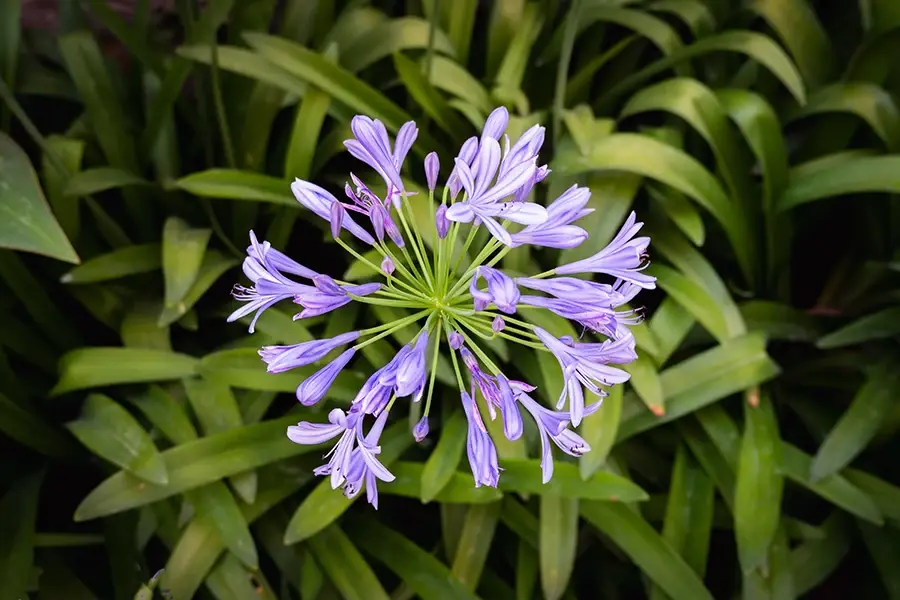Agapanthus africanus – African Lily, Lily of the Nile
- Hakan Sener
- Jul 6
- 2 min read
Updated: Jul 20
Explore Agapanthus africanus (African Lily) – its characteristics, habitat, cultivation, propagation, and functional uses and benefits.

Agapanthus africanus | Botanical Characteristics
Common Names: African Lily, Lily of the Nile
Family: Amaryllidaceae
Appearance: A clump-forming perennial with strap-like, glossy green leaves and tall flower stalks bearing showy blue to violet-blue funnel-shaped flowers in rounded umbels.
Type: Perennial
Evergreen / Deciduous: Evergreen in mild climates; semi-deciduous or deciduous in colder areas
Layer: Herb Layer
Root System: Fibrous and rhizomatous root system
Height: 0.6–1 meter
Width: 0.3–0.6 meters
Lifespan: Long-lived perennial
Growth Rate: Moderate
Fertility: Self-fertile
Flowers: Hermaphroditic
Pollinator: Attracts bees, butterflies, and other pollinators
Toxicity: Mildly toxic to humans and pets if ingested; sap may cause skin irritation
Agapanthus africanus | Habitat and Cultivation
Range
Native Range: South Africa (Western Cape)
Companionship: Grows well with Mediterranean and drought-tolerant perennials like lavender, rosemary, and ornamental grasses
Invasive Range: Can naturalize in some Mediterranean and subtropical climates; not aggressively invasive
USDA Hardiness Zone: 8–11
Minimum Chill Hours Required: None specified
Resistance/Tolerance
Poor Soil: Moderate tolerance
Drought: High tolerance once established
Shade: Moderate tolerance (flowers best in full sun)
Flood: Low tolerance
Wind: Moderate tolerance
Maritime: High tolerance
Air Pollution: High tolerance
Fire: Moderate tolerance
Thriving Conditions
Sun Exposure: Full sun to partial shade
Soil Moisture: Prefers moderately moist but well-drained soils
Soil Type: Sandy, loamy, or slightly clay soils with good drainage
Soil PH: Prefers slightly acidic to neutral (6.0–7.5)
Propagation
Seeds: Can be grown from seed but may take several years to flower
Cuttings: Not typical
Division: Easily propagated by division of clumps in early spring or after flowering
Agapanthus africanus | Functional Uses and Benefits
Edible: Not used as food
Medicinal: Traditional uses in South African medicine include treatments for heart conditions and pregnancy-related issues (use with caution – toxic components)
Cosmetics: Not commonly used in cosmetics
Animal Feed: Not suitable due to toxicity
Fiber: Not used for fiber
Timber: Not applicable
Firewood: Not applicable
Wind Break: Not suitable as a windbreak
Fence: Not typically used as a barrier plant
Cover Crop: Not used as a cover crop
Mulch: Not typically used as mulch
Nitrogen Fixer: No
Dynamic Accumulator: No significant data available
Pollinator Attractor: Yes, highly attractive to bees and butterflies
Pest Repellent: Not commonly noted as a repellent
Wildlife Supporter: Provides nectar for pollinators, especially in dry garden landscapes
Sign up for our newsletter or connect with us on social media to stay up-to-date with our latest posts and permaculture inspiration.
Explore our inspiring series and posts:
Love the post? Share it with your circle, inspire your people: